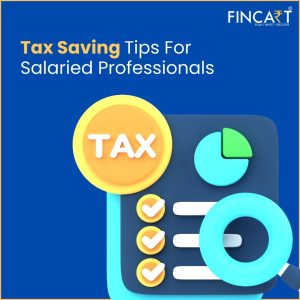Table of Contents
ToggleIncome Tax e-Filing
E-filing is the process of submitting your income tax return online via the Internet. Nowadays, we don’t have to deal with piles of paperwork and waiting in long lines at the tax office anymore. In today’s digital age, e filing of income tax has made fulfilling tax obligations much more convenient. With just a few clicks, you can quickly file your ITR online, making your overall tax planning much more efficient.
But still, the process can be a little confusing, especially if you are filing your taxes yourself for the first time. So in this blog, let’s see how to file itr, what steps to follow, what mistakes to avoid, and the many benefits of Income Tax e-Filing.
How to E-file ITR on Income Tax Online -Step-by-Step Guide
Wondering how to file income tax return online? Well, here how to submit itr through the official income tax portal:
Step 1: Login
- To efill income tax, go to https://eportal.incometax.gov.in/iec/foservices/#/login
- Click login and enter your PAN
- If you aren’t registered you will first have to click ‘register’ and enter the relevant details.
- Enter your password and captcha code and click continue.
Step 2: Go to ‘File Income Tax Return’
- Here you will find the ‘e-File’ menu on top.
- Click on e-File and then select ‘Income Tax Returns’
- Select File Income Tax Return.
Step 3: Select the right ‘Assessment Year’
- Here you will be prompted to select the assessment year or A. Y.
- If you earned income in the last year, say 2022-23. Your A.Y. will be 2023-24.
- Now you’ll have to select the mode for income tax return filing. Select ‘online’
- Proceed.
Step 4: Select the status
- You will be prompted to select the ‘status’
- This means you will be presented with three options – Individual, HUF, or Other.
- Select ‘Individual’ and continue.
Step 5: Select the ITR type
- Before you select the ITR type, you’ll have to find out which of the seven ITR forms you need to fill out.
- For example, ITR 1 is for individuals with income from salary/pension.
- ITR 2 relates to income from capital gains, foreign assets etc.
- ITR 3 includes income from ITR 2 and additionally, the income from business or profession.
- Select the relevant ITR and proceed.
Step 6: Choose the reason for filing ITR
- In this step, you will be asked why you are filing an ITR.
- The options presented are:
- 1. Taxable income is more than the basic exemption limit.
- 2. If it’s below, then your income meets specific criteria such as having more than a certain amount in your current or savings bank account, TDS/TCS over a certain limit, spending on foreign travel etc.
- 3. Others.
- Select the suitable option and proceed.
Step 7: Add Bank Account Details and Other Information
- Now you will be asked to either enter or update your bank details.
- You will then be shown a summary of the details you’ve entered. Read it carefully, and make sure everything is in order.
- This page will show whether or not you are eligible for any tax benefits.
- Submit.
Step 8: e-Verify ITR
- It’s very important to e-verify your income tax return.
- You can do this yourself by generating an OTP via Aadhar card, or EVC through your bank’s ATM.
- You can also use a pre-validated demat or bank account.
- Another way to complete the verification is by sending the ITR-V Form to the Centralised Processing Center, Income Tax Department, Bengaluru.
- The verification must be completed within 30 days from filing. Previously the limit was 120 days.
And you’re done! That’s how to apply itr!
Read More: Tax Planning Strategies for New Businesses
What are the documents required for e-filing?
Before you begin the Income Tax e-Filing process, make sure you have the following document for efile itr ready:
- PAN Card
- Form 16
- Rent receipts if you want to claim HRA
- Bank interest certificates
- Tax saving investment statements to claim deductions
- Form 16A
- Statement of capital gains
- AIS (Annual Information Statement)
- Form 26AS (a consolidated tax statement)
- TDS Certificates
Don’t fall behind your taxes!
Get in touch with Fincart to handle your taxes and optimize your savings.
Benefits of e-Filing Income Tax Returns
There are many benefits of Income Tax e-Filing:
- Using the e filing services is a convenient way to file ITR. You can do so from the comfort of your home, without the hassle of paperwork.
- By e-filing, you follow the tax regulations and reduce the risk of penalties and other legal issues.
- ITR allows you to easily claim tax deductions so you can maximise your savings and optimise your tax liabilities.
- Having an ITR means your visa will also be quickly approved.
- It allows the carry forward of losses which means it can potentially offset future tax liabilities and optimise your financial planning.
- ITR helps your eligibility when buying term insurance with a high cover.
- If you want to apply for a loan in the future you will need the ITR, so it also facilitates loan application.
- The e-file itr is also valid proof of income/net worth.
- These benefits highlight the importance of proper tax planning. A tax consultant can minimise your tax liabilities while making sure you’re compliant.
How to Check Income Tax e-Filing Status
You can follow these steps to check itr status:
- Log in to the e-filing portal.
- Select e-File on top.
- Select select income tax return filing and click the ‘View Filed Returns’ option.
- Here you’ll be able to see all your returns.
- Sort your returns by assessment year and select View Details to check the status of any specific year you want to review.
Penalty for Late Filing
Failure to file tax before the deadline carries fines. According to Section 234F of the Income Tax Act, if your total income is more than Rs. 5 lakh, a penalty of Rs. 5000 will be levied for late IT e-Filing. For small taxpayers, however, there is some relief as they will have to pay a fine of only Rs. 1000. That’s why you should always file taxes as soon as possible. When e-filing close to the deadline the servers may become congested, so to avoid crashes you should file well before the deadline.
Another thing to remember is that failure to file income tax returns by the due date will also result in you having to pay interest at a rate of 1% per month on the outstanding tax amount. Overall, you may have to pay more than you owe, so consulting with a tax planner could be a wise move. With a tax planner, you will not only avoid any late filing penalties but also the penalties that come with submitting erroneous ITR.
Read More: Best Tax Saving Investment Plans & Schemes
New Rules for Income Tax e-filing
The Finance Minister announced some changes to tax slabs, rates and rebates in the Union Budget 2024. Some of the new rules for itr are:
- The new tax regime will be the default unless taxpayers specifically choose the old regime.
- Earlier the tax rebate limit used to be Rs. 5 lakh, but it has now been increased to Rs. 7 lakh.
- If income is more than Rs. 5 crore, the surcharge rate has been decreased from 37% to 25%.
- Any resident earning more than Rs. 3 lakh has to pay income tax according to their tax slabs.
- Before you begin IT e-Filing, it’s important to be fully updated about the changes in tax rates slabs, rebates, fines and other rules.
Common Mistakes to Avoid While Filing ITR
When filing an ITR, one can make some errors due to the confusing verbiage and rules. Here are some common mistakes to avoid when filing your income tax return:
- As said before there are 7 ITR forms, so selecting the ITR form most suited to you is crucial. Any ITR that is filed using the incorrect form gets marked as defective.
- Always double-check your entered details such as PAN, Aadhar number, address, and contact information.
- Make sure your bank details such as account number, IFSC code, name, and statements are in order.
- There are 5 heads of income tax – income from salary, income from house property, income from profits and gains from business or profession, income from capital gains, and income from other sources. You have to correctly classify your income under these heads.
- Don’t underreport your income. All income such as salary, business profits, rental income, dividends, interest, and freelance should be reported transparently.
- Don’t wait until the deadline to file your taxes. This task is too important to postpone.
- Ensure your PAN is linked to your bank accounts and your Aadhar card.
- Often people don’t e-verify their returns. As stated above you can e-verify yourself using OTP from Aadhar or EVC, or you can send the ITR-V to CPC, Bengaluru within 30 days of e-filing.
Don’t fall behind your taxes!
Get in touch with Fincart to handle your taxes and optimize your savings.
FAQs on e-Filing Income Tax
What is efiling of income tax returns?
E-filing means electronic filing. E-filing ITR refers to the process of filing income tax returns through the internet, by using the income tax portal.
What is the minimum income to file taxes in FY 2023-24?
Under the new tax regime, which is the default regime for taxpayers, the minimum income to file taxes is Rs. 3 lakh.
Can I file ITR Myself?
Yes, you can file ITR yourself online or offline. For e-filing, you can use the Income Tax e-filing portal.
Whom can I contact for rectification and other income tax processing-related queries?
For rectification and other income tax processing-related queries, you can contact the Income Tax Department’s customer care. Visit here for more details: https://www.incometax.gov.in/iec/foportal/contact-us
What is the most common mistake when filing taxes?
There are many mistakes one can make when filing taxes as discussed above. The most common one however is choosing the incorrect ITR form.
Who is exempt from ITR filing?
Super senior citizens, people earning income exempt under Section 10, and people with income under the basic exemption limit are exempted from ITR filing.
What happens if E-filing still needs to be done?
If E-filing isn’t done before the deadline, it can lead to penalties.
Is it compulsory to file an ITR every year?
According to the Income Tax Act of 1961, individuals with income above the basic exemption limit must file an ITR every year.
What is the late fee for ITR Filing?
Individuals with income less than Rs. 5 lakh must pay a fine of Rs. 1000 for late ITR filing. Individuals earning above must pay Rs. 5000 if they fail to file ITR on time.
Can I do ITR efiling without Form 16?
Yes, even if you didn’t receive Form 16 from your employer, it is possible to file ITR by using other statements and documents such as Form 26AS, payslips, and proofs of investments.
What is the last date to e-verify income tax return?
You must e-verify your income tax return within 30 days of e-filing. You can do this via Aadhar OTP or generating an EVC.
How to file income tax return after due date?
You can file a belated return after the initial deadline, but a penalty will be charged for the delay.
How to file income tax return for previous years?
You can file income tax returns for previous years by selecting the relevant assessment year. This is also considered a belated return.
How to get an income tax return copy online?
You can download your income tax return copy by visiting the income tax portal. After logging in, go to ‘e-File’, select ‘Income Tax Returns’, and click ‘View Filed Returns’. Here you find all your returns of the previous years. To obtain your copy, simply select the desired year and click on ‘Download Form’.

![You are currently viewing Income Tax e-Filing – How to File ITR Online? | [Jun’24]](https://fincart.com/wp-content/uploads/2024/02/2-1.jpg)


